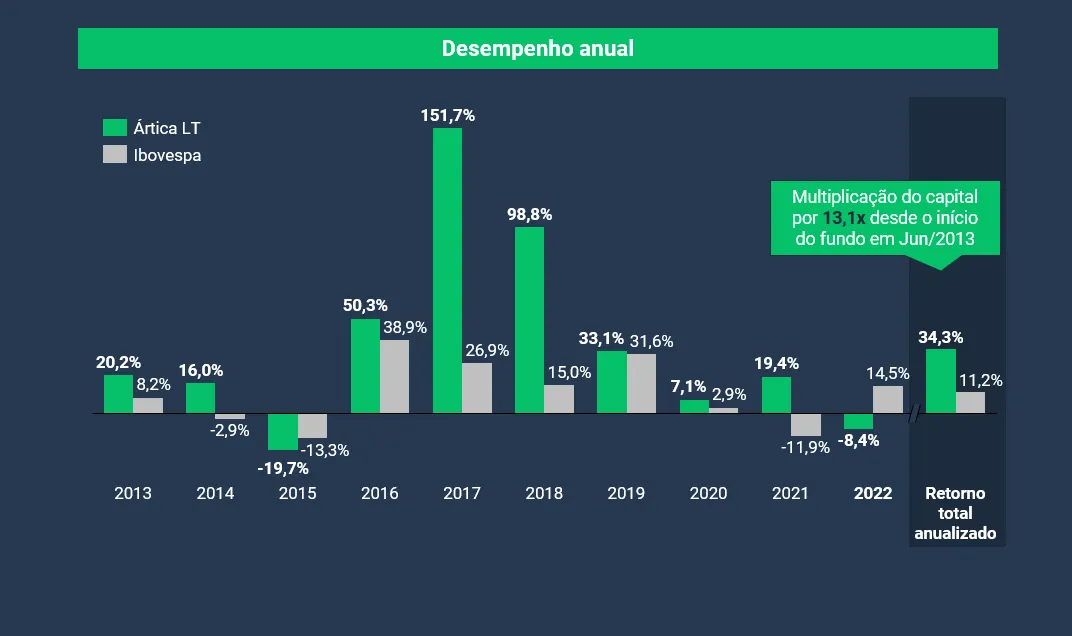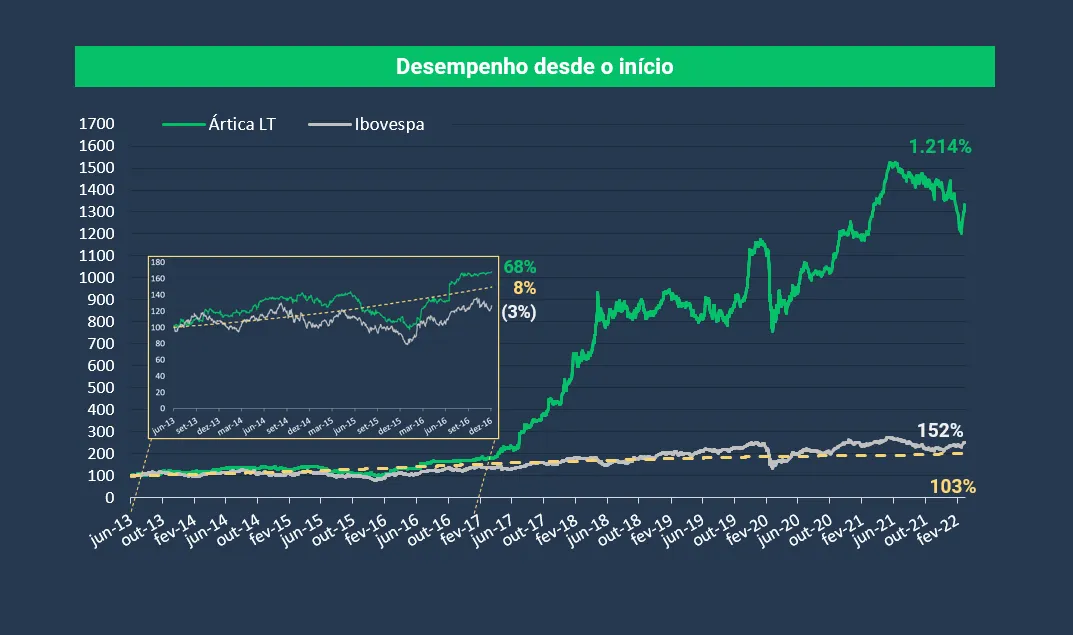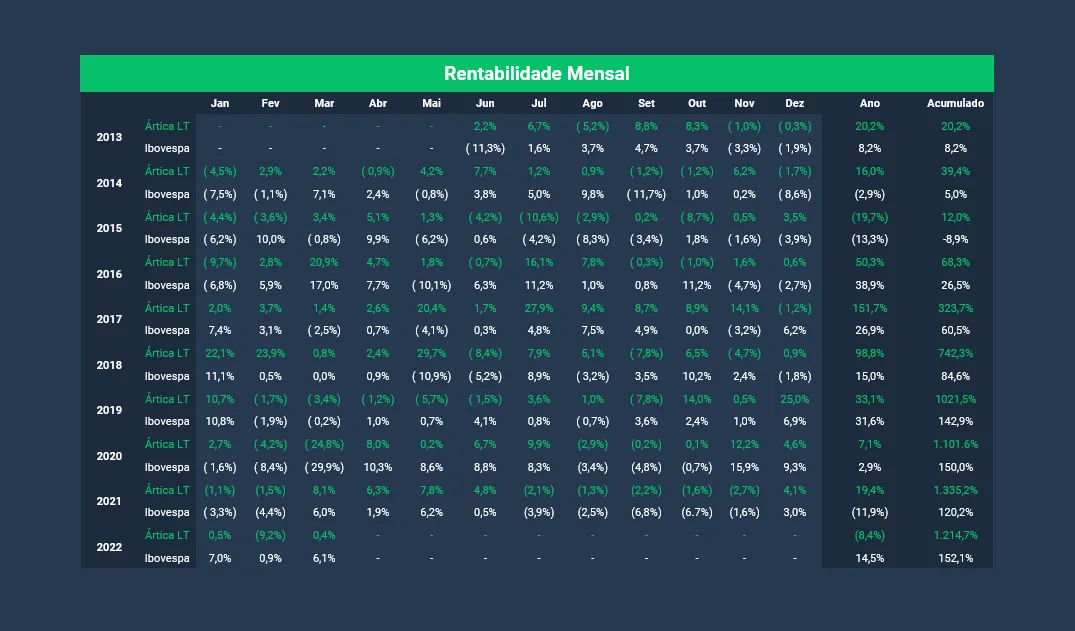The flaws of the human mind
Dear investors,
Being a good investor requires not only technical knowledge and dedication to analyzing opportunities, but also a certain temperament and psychological control that allow us to maintain rationality in any scenario we face.
Along these lines, we'd like to delve deeper into a topic we briefly touched on in our last letter: cognitive biases. The topic is quite broad, so we've selected three important biases in investment activity to present to you this time, and we'll return to the topic in future letters. We'll cover the biases of social proof, extrapolation, and confirmation.
What are cognitive biases?
Our brains handle complex analyses in an interesting way: we develop shortcuts and mental models that simplify reasoning and allow us to reach conclusions more quickly. This way of thinking, called heuristics, is quite efficient. Besides avoiding the dysfunctional immobility that would be caused by trying to analyze every situation in detail, it leads us to correct conclusions in most cases. However, heuristics have their limitations.
These simplifications occur in our minds involuntarily and unconsciously. Thus, where they are flawed, they lead us to chronic logical errors. These instinctive patterns that repeatedly lead us to erroneous conclusions are what we call cognitive biases.
For investors, understanding cognitive biases has two benefits: avoiding rationality errors in our own investment decisions and diagnosing when market movements are driven by biases present in a given situation.
The task is not easy. Dozens of biases have already been identified and categorized, and even understanding the mechanism of action of each one, applying them to real-world situations is not always straightforward. There are cases where subtle errors have serious consequences. There are cases where multiple biases act simultaneously, making the situation more difficult to interpret.
On the other hand, the workings of the mind itself are a topic that sparks interest in most people, and studying it has always been quite enjoyable for us. We hope it is for you too.
The three biases we'll explore in this letter were selected because they frequently influence investors and are relatively easy to understand, despite the inherent complexity of the topic itself. Let's take a look at them.
Social proof bias
In a series of experiments conducted in the 1950s (the Asch Conformity Experiments), researchers formed groups of eight people and asked them a series of multiple-choice questions with obvious answers. For example, participants were asked to choose which of three bars drawn on a card was the same size as a fourth bar, with one bar clearly larger and the other smaller than the fourth bar. Interestingly, seven of the eight participants in each group were actors who answered before the eighth person. When all seven actors chose the same wrong answer, the eighth person had a 32% chance of also choosing the obviously wrong answer.
The bias is quite simple: we tend to act the way we see people around us acting and believe what the majority says they believe. This primitive impulse serves a survival function: if you see a crowd running in a square, it's probably better to run in the same direction than to summon your philosophical spirit and decide to stay behind to investigate the reason for the stampede.
Instinct is less useful for making good investment decisions and is one of the factors that contributes to market excesses in both bubbles and crises. During bull market cycles, you see other people investing and making money from stocks that keep rising. So, you start to wonder if you shouldn't invest too, since everyone else is doing it and you don't want to be left out. In times of crisis, the same logic applies in reverse. You see everyone leaving the market and fear suffering alone, being left behind.
Social proof bias is particularly influential on those experiencing doubt. This makes investors, who tend to have more doubts than certainties, especially susceptible to influence and inclined to seek confirmation or denial of their own ideas in the actions of others. Added to this tendency is the fact that expressing doubts publicly can be seen as a sign of weakness, causing people to express themselves with a tone of certainty far greater than their actual confidence in their statements. The listener relies on this display of artificial certainty, gaining some confidence, and begins repeating the same content equally assertively, and thus the effect propagates to large numbers of people.
The ideal for an investor is to think independently, drawing their own conclusions based on their own analyses. However, this principle is easy to understand but difficult to practice. It largely depends on each person's personality: in the experiments mentioned above, 25% of the participants always chose the correct answer, unaffected by the actors' incorrect answers. The remaining 75% chose the obviously wrong answer in at least one question.
Extrapolation bias
The human mind is skilled at inductive reasoning: we recognize patterns in the world and assume they will continue to repeat themselves. It's an excellent way to predict simple phenomena subject to constant natural laws: a stone thrown into the air will always return to the ground, copper will always be a good conductor of electricity, and fire will always burn our hands. However, the inductive method is less effective for predicting the future of business, due to its complexity and the number of variable factors involved.
Although it's inappropriate in a number of situations, including investment analysis, we tend to continue to reason inductively: we assume that a company that's growing rapidly will continue to grow at the same rate, that a business's profitability level will remain constant, and that a stock that's been rising should continue its upward trajectory. This is what we call the extrapolation bias, one of the most prevalent in an investor's daily life.
Note that the problem with this bias isn't that it frequently leads to erroneous conclusions, as the future is often an extrapolation of the recent past. The problem is the unreliability of the inductive method, which is overly simplistic and can lead to errors that could be avoided through more comprehensive analysis. In investments, the cost of error is often very high, so it makes sense to put greater effort into increasing the reliability of each thesis.
The recommendation to counterbalance this bias is to conduct deeper analyses, seeking to understand the factors behind each result: before judging that a company will continue to grow rapidly, it's worth understanding why the business grew at this rate in the past, how much space there is still in the market, how the competition has behaved, etc.
Even with all due diligence, predicting the future will always be a difficult task. It's important to remain aware that not all uncertainty can be reduced with more analysis. Some factors will always be unpredictable, and the best approach is to treat them as unknowns, remaining aware of the risk they pose to the investment.
Confirmation bias
Another symptom of our inductive nature is that we formulate initial theses based on our initial observations and, from then on, we instinctively pay greater attention to what corroborates our initial hypotheses. This behavior is called confirmation bias and affects us in three ways: i) when researching a topic, we tend to seek only information that confirms our pre-existing beliefs or hypotheses and do not look for contrary evidence; ii) in analyses, we tend to give greater value to data that supports our theses and ignore inconsistent data; and iii) we memorize information selectively, more easily remembering what confirms what we want to prove.
All three forms usually manifest themselves during investment analyses: an investor becomes sympathetic to a company, begins to search for more reasons to consider it a good investment (and finds several, since there are always more public reports praising companies than criticizing them), unconsciously judges data sets and analyses that lead to positive conclusions as more relevant, and easily memorizes the main ideas and information that support the investment thesis.
The methodological problem caused by this bias is so counterintuitive that, at first glance, it may go unnoticed in the following statement: a hypothesis is true when there is evidence to confirm it.
The flaw lies in ignoring potential counter-evidence that might prove the hypothesis wrong. The antidote stems from a simple idea, one of the scientific method's key contributions to the evolution of human thought: we should try to invalidate the hypothesis during the process employed to verify its correctness. Those that withstand this test of falsification are likely correct.
The parallel is immediate in the investment context: when analyzing opportunities, the focus should be on identifying potential problems within the company and flaws in the investment rationale. The theses that withstand falsification tests are those most likely to succeed.
Is there a cure?
Each person is more or less prone to certain biases, depending on their temperament and personality. In our experience, it's possible to learn to identify your own biases, understand in which situations they exert the greatest influence, and train yourself to counteract them through discipline and methodological rigor. However, there's no way to completely eliminate biases. They will always be present and require constant attention.
For those interested in reading more on the topic, we recommend the book "Thinking Fast and Slow" by Daniel Kahneman, a pioneering researcher in the field of Behavioral Economics who coined the term "cognitive bias" and won the Nobel Prize in Economics for his contributions to the field. In this book, he explains that, even after decades of studying the subject, he hasn't been able to completely eliminate his own biases.








